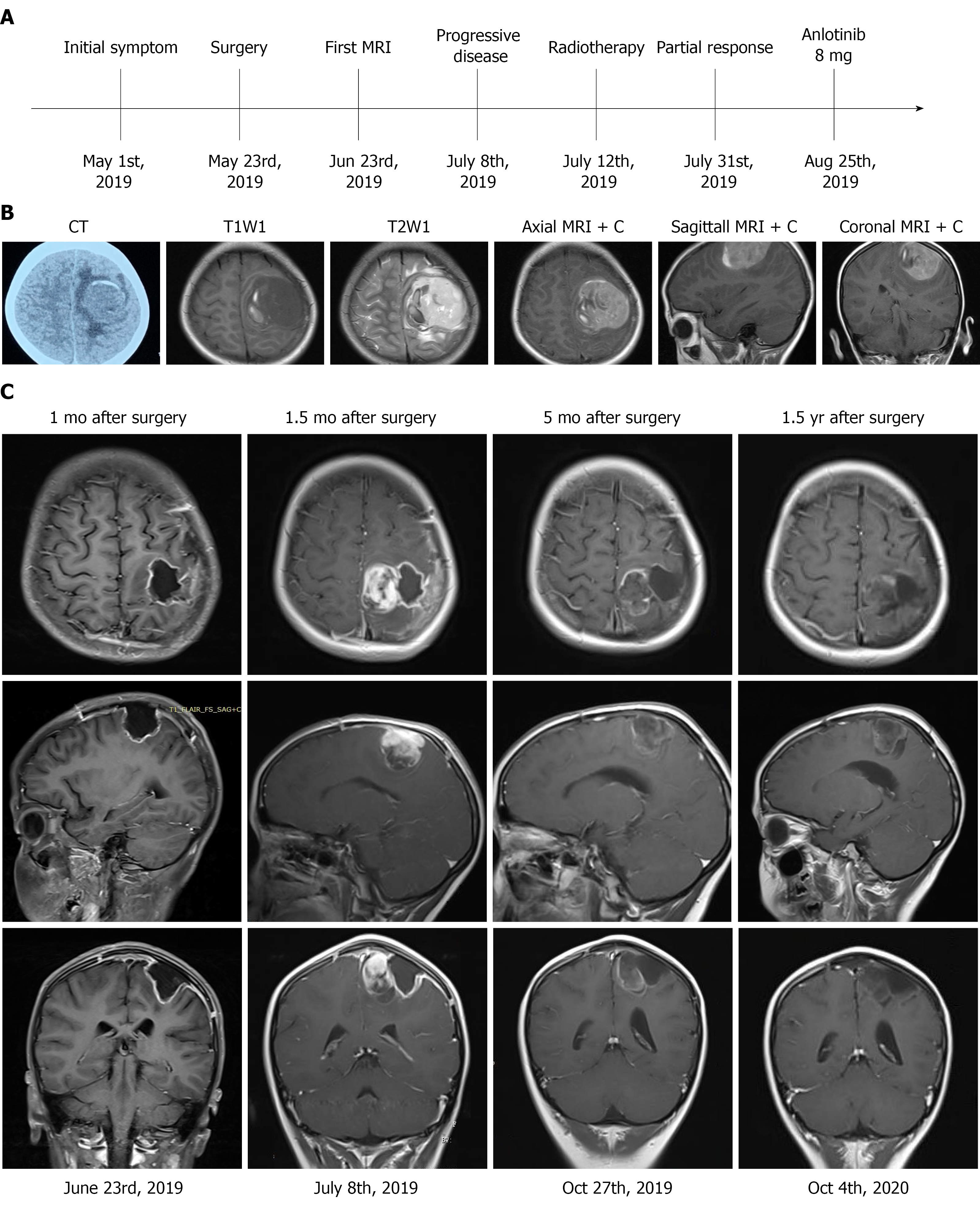Copyright
©The Author(s) 2022.
World J Clin Cases. Jan 14, 2022; 10(2): 631-642
Published online Jan 14, 2022. doi: 10.12998/wjcc.v10.i2.631
Published online Jan 14, 2022. doi: 10.12998/wjcc.v10.i2.631
Figure 1 Treatment timeline and radiography.
A: The treatment timeline; B: A head computed tomography scan revealed a quasi-circular mass in the left frontal-parietal region with high-density and associated hemorrhage. Brain magnetic resonance imaging (MRI) revealed low signals on T1 weighted imaging with high surrounding signals. High signals on T2 weighted imaging with low surrounding signals were observed, with marked enhancement on contrast measuring 4.8 cm × 5.0 cm × 4.5 cm in the left motor area of the frontal-parietal lobes (axial, sagittal and coronal views); C: Gadolinium-enhanced MRI imaging in axial, sagittal and coronal views 1 mo after surgery. MRI imaging showed no residual tumor; 1.5 mo after surgery, MRI imaging showed a solid mass. Five months and 1.5 year after surgery, MRI imaging showed that the tumor had not progressed. MRI + C: Gadolinium-enhanced magnetic resonance imaging.
- Citation: Zhang DY, Su L, Wang YW. Malignant solitary fibrous tumor in the central nervous system treated with surgery, radiotherapy and anlotinib: A case report. World J Clin Cases 2022; 10(2): 631-642
- URL: https://www.wjgnet.com/2307-8960/full/v10/i2/631.htm
- DOI: https://dx.doi.org/10.12998/wjcc.v10.i2.631









